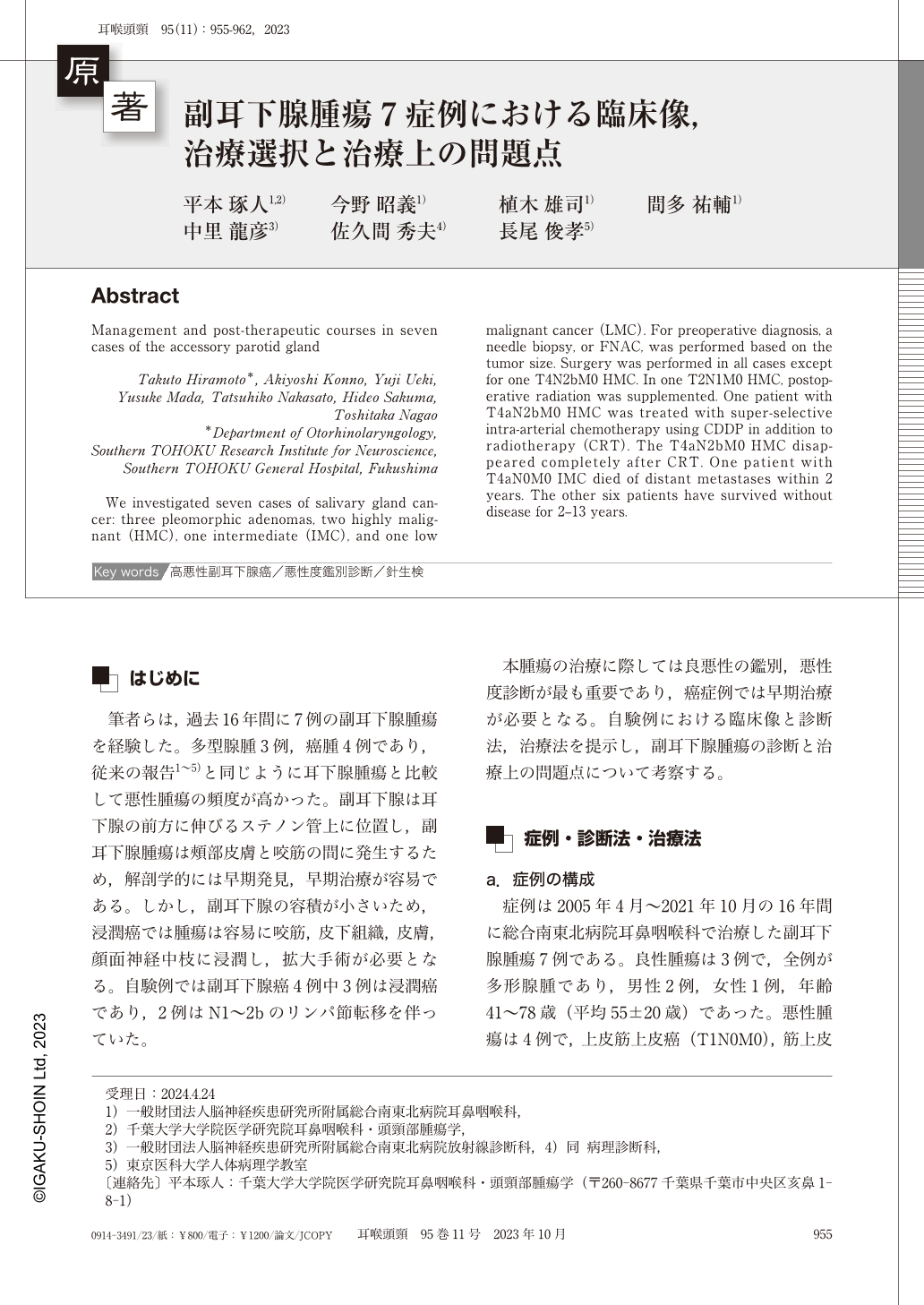Japanese
English
- 有料閲覧
- Abstract 文献概要
- 1ページ目 Look Inside
- 参考文献 Reference
はじめに
筆者らは,過去16年間に7例の副耳下腺腫瘍を経験した。多型腺腫3例,癌腫4例であり,従来の報告1〜5)と同じように耳下腺腫瘍と比較して悪性腫瘍の頻度が高かった。副耳下腺は耳下腺の前方に伸びるステノン管上に位置し,副耳下腺腫瘍は頰部皮膚と咬筋の間に発生するため,解剖学的には早期発見,早期治療が容易である。しかし,副耳下腺の容積が小さいため,浸潤癌では腫瘍は容易に咬筋,皮下組織,皮膚,顔面神経中枝に浸潤し,拡大手術が必要となる。自験例では副耳下腺癌4例中3例は浸潤癌であり,2例はN1〜2bのリンパ節転移を伴っていた。
本腫瘍の治療に際しては良悪性の鑑別,悪性度診断が最も重要であり,癌症例では早期治療が必要となる。自験例における臨床像と診断法,治療法を提示し,副耳下腺腫瘍の診断と治療上の問題点について考察する。
We investigated seven cases of salivary gland cancer: three pleomorphic adenomas, two highly malignant (HMC), one intermediate (IMC), and one low malignant cancer (LMC). For preoperative diagnosis, a needle biopsy, or FNAC, was performed based on the tumor size. Surgery was performed in all cases except for one T4N2bM0 HMC. In one T2N1M0 HMC, postoperative radiation was supplemented. One patient with T4aN2bM0 HMC was treated with super-selective intra-arterial chemotherapy using CDDP in addition to radiotherapy (CRT). The T4aN2bM0 HMC disappeared completely after CRT. One patient with T4aN0M0 IMC died of distant metastases within 2 years. The other six patients have survived without disease for 2-13 years.

Copyright © 2023, Igaku-Shoin Ltd. All rights reserved.


